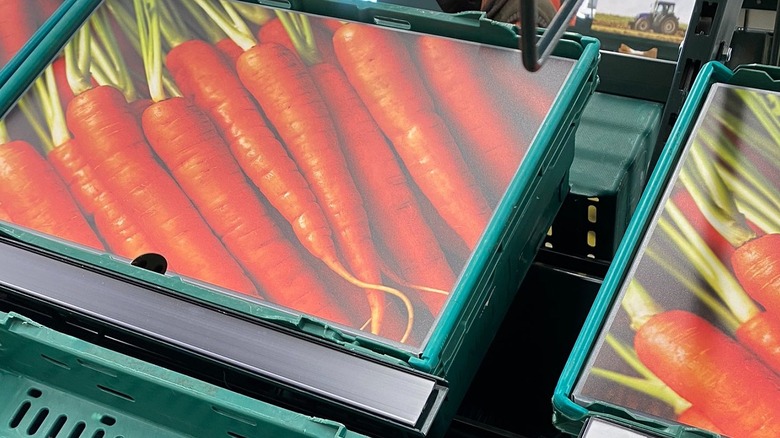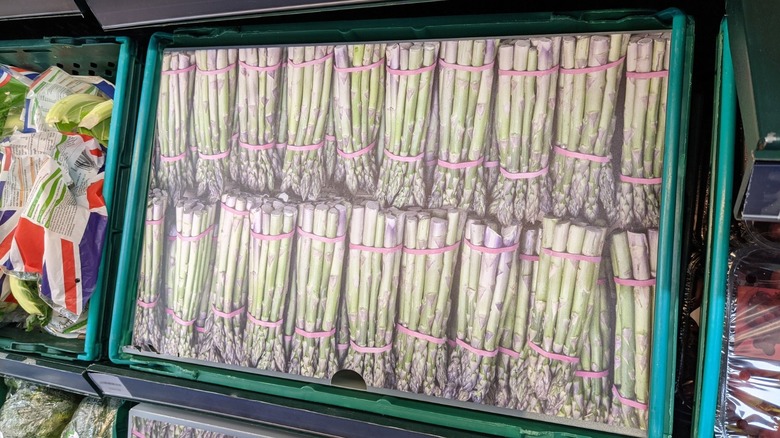The Real Reason Your Grocery Store Might Stock Cardboard Cutouts Instead Of Food
When you go to the grocery store, you probably expect to see the shelves teeming with fresh produce, bread, cheeses, and a wide variety of items that are on your weekly grocery list. However, that has not necessarily been the case lately. Ongoing supply chain issues have been plaguing supermarkets around the world. And according to a recent survey in the U.K., many consumers worry that they won't be able to find the staples they need to complete their grocery shopping this holiday season as prices rise and demand increases (via Food & Wine).
But some shoppers in the U.K. have been greeted by shelves at stores like Tesco and Sainsbury's that, at first glance, appear to be well-stocked with groceries. However, upon closer inspection, they have been surprised to find that what looks like full shelves from a distance turned out to be cardboard cutouts of food. On recent shopping trips, shoppers have reported seeing fake grapes, carrots, and asparagus, and even cardboard supplies like laundry detergent, instead of the real thing. According to The Guardian, these photographs are partly being used to fill the literal gaps on shelves that are caused by problems that prevent goods from reaching stores, including overwhelmed shipping ports and ongoing shortages of drivers as well as people who pick and pack goods at processing plants and on farms.
Shortages aren't the only explanation for the cutouts
However, while shortages may be a major reason for the cutouts, they aren't the only reason. "It has become quite commonplace. It is not only because of shortages but because a lot of the larger stores are now simply too big," Bryan Roberts, a retail analyst at Shopfloor Insights, told The Guardian. Many of their main competitors, like Aldi, have less than 3,000 products on offer, as compared to traditional grocery stores' typical product lines of over 40,000. So bigger chains have been purposefully culling their selections to be more competitive. Tesco denied supply chain shortages are the reason its shelves seem more empty. A huge shift to online shopping, the closure of some food service counters, and increased efforts to reduce food waste might be factors that help explain it.
Many sellers believe the cardboard cutouts are a better option than leaving the shelves bare. Steve Dresser, a director at Grocery Insight, explained to The Telegraph, "No one wants empty shelves as it's a negative perception of availability and that can impact sales and leave customers thinking that the store is poorly presented. Blocking the shelves with cardboard 'fillers' is preferable as it's a nice halfway house, reflecting that gaps are longer term but not forcing the store itself to change layouts."

